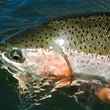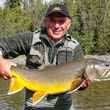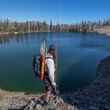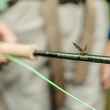Bonefish are on the decline in the Florida Keys. So are the fish that eat them. Barracuda, once a traditional target of winter flats fishing, are now scarce.
“I just started guiding in 2000, which is not long in the whole scheme of things,” Key West guide John O’ Hearn said. “In the winter you could go to any flat and have a few cudas on it, even if it wasn’t a good flat. You could go anywhere and there would be barracudas. Over the years, you had to get better and better [at finding them]. There are places still with good barracuda fishing. You just have to keep working harder and harder.”
With so few fish, O’Hearn and other colleagues in the Lower Keys Guides Association started a Save the Barracuda Campaign and urged the Florida Fish & Wildlife Conservation Commission to implement harvest regulations to protect the saltwater predator.





























